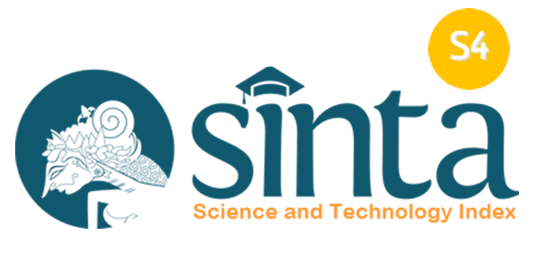Latrihal Media to Improve Fine Motor Ability in Student with Visual Impairment
Abstract
The purpose of this study was to determine the use of latrihal media in improving fine motor skills in students with visual impairment. The methods used are lectures, demonstrations, and assignments. The subject of this research is 1 student with visual impairment at the special needs school, in Sumedang, West Java. The results showed that students experienced an increase in ability and had reached the Minimum Completeness Criteria of 65. In the initial ability, students get a score of 25 with a percentage of 25% and increase to a score of 72 with a percentage of 72%, so that there is an increase of 47%. Increased research is also indicated by the results of initial observations obtaining a score of 2 in the discipline aspect; a score of 1 on the conscientious aspect; score 1 on the aspect of concentration; and a score of 1 on the participatory aspect to a score of 3 on the discipline aspect; a score of 3 on the conscientious aspect; score 3 on the aspect of concentration; and a score of 3 on the aspect of participation in the final observation because students get direct experience using interesting media. This study demonstrates that the use of concrete learning media will make it easier to improve students' finger coordination skills. In addition, fine motor training media also makes it easier for teachers to guide students, especially for students with visual impairment.
Keywords
Full Text:
PDFReferences
Agustina, S., Nasirun, M., and Delrefi, D. (2018). Meningkatkan keterampilan motorik halus anak melalui bermain dengan barang bekas. Jurnal Ilmiah Potensia, 3(1), 24-33.
Camalia, F., Susanto, H., and Susilo, S. (2016). Pengembangan audiobook dilengkapi alat peraga materi getaran dan gelombang untuk tunanetra kelas. Unnes Physics Education Journal, 5(2), 66-75.
Dedy, K. Meningkatkan kemampuan motorik halus siswa tunanetra melalui permaninan piano. JASSI ANAKKU, 19(1), 32-39.
Hermawanto, F., Sabiku, S. A., and Dai, M. (2019). Aplikasi pembaca tunanetra menggunakan smartphone android. Jurnal Teknologi Informasi Indonesia (JTII), 4(1), 40-47.
Muthmainnah, R. N. (2015). Pemahaman siswa tunanetra (buta total sejak lahir dan sejak waktu tertentu) terhadap bangun datar segitiga. Fibonacci: Jurnal Pendidikan Matematika dan Matematika, 1(1), 15-27.
Suciati, W. A., and Sumiharsono, R. (2018). Pengaruh penggunaan keterampilan meronce terhadap kemampuan motorik halus anak tunanetra kelas v. Speed Journal: Journal of Special Education, 1(2), 30-39.
Suraningsih, V. (2020). Peningkatan keterampilan motorik halus melalui metode drill teknik belajar mandiri pada anak mdvi kelas vi di SLB Negeri 1 Bantul. Exponential (Education For Exceptional Children) Jurnal Pendidikan Luar Biasa, 1(2), 99-112.
Tafonao, T. (2018). Peranan media pembelajaran dalam meningkatkan minat belajar mahasiswa. Jurnal Komunikasi Pendidikan, 2(2), 103-114.
Tahel, F., and Ginting, E. (2018). Penerapan aplikasi flash dalam media pembelajaran mewarnai gambar untuk meningkatkan motorik halus. Jurnal Informatika Kaputama (JIK), 2(1), 34-43.
Widodo, P. (2020). Peningkatan prestasi operasional perkalian melalui metode jarimatika pada siswa tunanetra kelas iii slb negeri 1 bantul. Exponential (Education For Exceptional Children) Jurnal Pendidikan Luar Biasa, 1(1), 51-57.
DOI: https://doi.org/10.17509/jassi.v21i1.39522
Refbacks
- There are currently no refbacks.
Copyright (c) 1970 Universitas Pendidikan Indonesia

This work is licensed under a Creative Commons Attribution-ShareAlike 4.0 International License.




